Characterization of Mice Carrying a Neurodevelopmental Disease-Associated GluN2B(L825V) Variant
- PMID: 38926089
- PMCID: PMC11293445
- DOI: 10.1523/JNEUROSCI.2291-23.2024
Characterization of Mice Carrying a Neurodevelopmental Disease-Associated GluN2B(L825V) Variant
Abstract
N-Methyl-d-aspartate receptors (NMDARs), encoded by GRIN genes, are ionotropic glutamate receptors playing a critical role in synaptic transmission, plasticity, and synapse development. Genome sequence analyses have identified variants in GRIN genes in patients with neurodevelopmental disorders, but the underlying disease mechanisms are not well understood. Here, we have created and evaluated a transgenic mouse line carrying a missense variant Grin2bL825V , corresponding to a de novo GRIN2B variant encoding GluN2B(L825V) found in a patient with intellectual disability (ID) and autism spectrum disorder (ASD). We used HEK293T cells expressing recombinant receptors and primary hippocampal neurons prepared from heterozygous Grin2bL825V/+ (L825V/+) and wild-type (WT) Grin2b+/+ (+/+) male and female mice to assess the functional impact of the variant. Whole-cell NMDAR currents were reduced in neurons from L825V/+ compared with +/+ mice. The peak amplitude of NMDAR-mediated evoked excitatory postsynaptic currents (NMDAR-eEPSCs) was unchanged, but NMDAR-eEPSCs in L825V/+ neurons had faster deactivation compared with +/+ neurons and were less sensitive to a GluN2B-selective antagonist ifenprodil. Together, these results suggest a decreased functional contribution of GluN2B subunits to synaptic NMDAR currents in hippocampal neurons from L825V/+ mice. The analysis of the GluN2B(L825V) subunit surface expression and synaptic localization revealed no differences compared with WT GluN2B. Behavioral testing of mice of both sexes demonstrated hypoactivity, anxiety, and impaired sensorimotor gating in the L825V/+ strain, particularly affecting males, as well as cognitive symptoms. The heterozygous L825V/+ mouse offers a clinically relevant model of GRIN2B-related ID/ASD, and our results suggest synaptic-level functional changes that may contribute to neurodevelopmental pathology.
Keywords: GluN2B; NMDA receptors; autism spectrum disorder; mouse model; synaptic transmission.
Copyright © 2024 the authors.
Conflict of interest statement
The authors declare no competing financial interests.
Figures
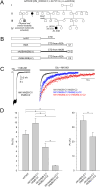


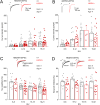

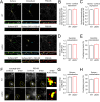

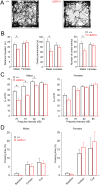
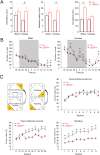
Similar articles
-
Disease-Associated Variants in GRIN1, GRIN2A and GRIN2B genes: Insights into NMDA Receptor Structure, Function, and Pathophysiology.Physiol Res. 2024 May 31;73(Suppl 1):S413-S434. doi: 10.33549/physiolres.935346. Epub 2024 May 31. Physiol Res. 2024. PMID: 38836461 Free PMC article. Review.
-
A Rare Variant Identified Within the GluN2B C-Terminus in a Patient with Autism Affects NMDA Receptor Surface Expression and Spine Density.J Neurosci. 2017 Apr 12;37(15):4093-4102. doi: 10.1523/JNEUROSCI.0827-16.2017. Epub 2017 Mar 10. J Neurosci. 2017. PMID: 28283559 Free PMC article.
-
Early correction of synaptic long-term depression improves abnormal anxiety-like behavior in adult GluN2B-C456Y-mutant mice.PLoS Biol. 2020 Apr 30;18(4):e3000717. doi: 10.1371/journal.pbio.3000717. eCollection 2020 Apr. PLoS Biol. 2020. PMID: 32353004 Free PMC article.
-
Disruption of grin2B, an ASD-associated gene, produces social deficits in zebrafish.Mol Autism. 2022 Sep 22;13(1):38. doi: 10.1186/s13229-022-00516-3. Mol Autism. 2022. PMID: 36138431 Free PMC article.
-
Human GRIN2B variants in neurodevelopmental disorders.J Pharmacol Sci. 2016 Oct;132(2):115-121. doi: 10.1016/j.jphs.2016.10.002. Epub 2016 Oct 19. J Pharmacol Sci. 2016. PMID: 27818011 Free PMC article. Review.
Cited by
-
Comprehensive Gene Expression Analysis Using Human Induced Pluripotent Stem Cells Derived from Patients with Sleep Bruxism: A Preliminary In Vitro Study.Int J Mol Sci. 2024 Dec 6;25(23):13141. doi: 10.3390/ijms252313141. Int J Mol Sci. 2024. PMID: 39684851 Free PMC article.
-
NMDA Receptors in Neurodevelopmental Disorders: Pathophysiology and Disease Models.Int J Mol Sci. 2024 Nov 18;25(22):12366. doi: 10.3390/ijms252212366. Int J Mol Sci. 2024. PMID: 39596430 Free PMC article. Review.
-
Disease-Associated Variants in GRIN1, GRIN2A and GRIN2B genes: Insights into NMDA Receptor Structure, Function, and Pathophysiology.Physiol Res. 2024 May 31;73(Suppl 1):S413-S434. doi: 10.33549/physiolres.935346. Epub 2024 May 31. Physiol Res. 2024. PMID: 38836461 Free PMC article. Review.
References
-
- Akashi K, Kakizaki T, Kamiya H, Fukaya M, Yamasaki M, Abe M, Natsume R, Watanabe M, Sakimura K (2009) NMDA receptor GluN2B (GluR epsilon 2/NR2B) subunit is crucial for channel function, postsynaptic macromolecular organization, and actin cytoskeleton at hippocampal CA3 synapses. J Neurosci 29:10869–10882. 10.1523/JNEUROSCI.5531-08.2009 - DOI - PMC - PubMed
MeSH terms
Substances
LinkOut - more resources
Full Text Sources
Molecular Biology Databases
Miscellaneous
